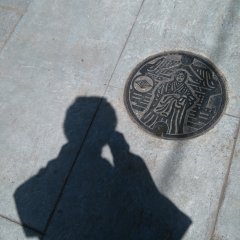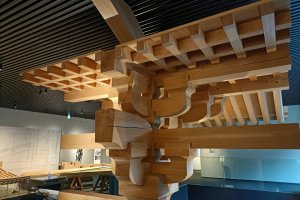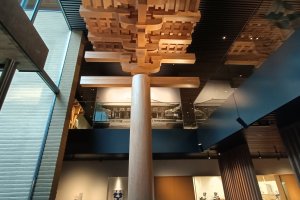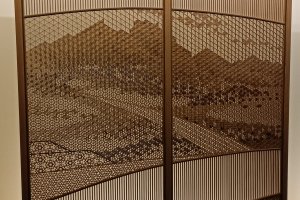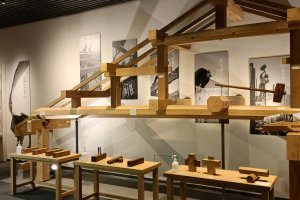Kobe's Takenaka Carpentry Tools Museum is a revelation, how Japan's exquisite temples and shrines have been built and how it is they continue to thrill us after centuries. It is also then a tribute to the craftsmen and their tools involved in the construction. Simple wood and metal are the main materials, but what magic the craftsmen can work. We see a different perspective of tools as being not just functional, but also quite beautiful.

Seven zones spread over two floors draws us into the whole process, from the felling of the trees to how the ensuing lumber is sharpened, shaved, and shaped, to become a temple.

The tools used are displayed in shapes and sizes we never knew of, nor found in the old toolbox at home. They are set out according to a specific purpose, like lumbering, measuring, sawing, blacksmithing, or according to their chronology, starting from rough axes to sophisticated planing instruments. The Museum's tool treasury contains about 35,000 tools, with around 1000 of these permanent exhibits. Many have their lethally tempting ends thoughtfully protected by plastic.

The Museum, itself a beauty constructed of wood, uses a variety of mediums to convey the information accompanying the exhibits, such as photographs, diagrams, the actual tools and products, videos, voice tapes. A section is devoted to the master carpenters, with their original notebooks, drafts, plans, complete with their notations and scribblings. Their personal tools and a voice recording are also available, from a century ago.
You couldn't miss it even if you tried, the life size replica of the roof turret section of Nara's Toshodaiji Temple. Approximately seven metres, It rises dramatically from the basement to the third floor.

The painstaking precision of the craftsmen is evident in how each of the replica's 147 wooden parts has been carefully measured, cut and honed, to tightly fit into each other. Then to allow small enough gaps to forestall extreme weather changes. So that's how Toshodaiji has lasted so long, 1,300 years ago.
Another replica is of a Japanese tea room modelled after the Daitokuji Gyokurin-in Temple in Kyoto, highlighting walls made of woven strips of bamboo. It's also an example of how a tool in the right hands can turn wood into art. A square of wooden lace hangs on the wall, while a picture has been created with different shades of wood.

There are other memorable stations. One shows comparisons among carpentry tools from China and Europe, while in another, we can see Japanese conservation in play, for example, left over wood shavings worked with glue to become furniture. The fragrance of wood follows us from room to room. This is a Museum to happily lose yourself in wood.

The Takenaka Corporation opened the Museum, the only such one in Japan, in 1984. This huge engineering and construction firm was founded in 1610 by a carpenter specializing in building temples and shrines. It's said a bad workman blames his tools. I guess this won't be the case in Japan.

